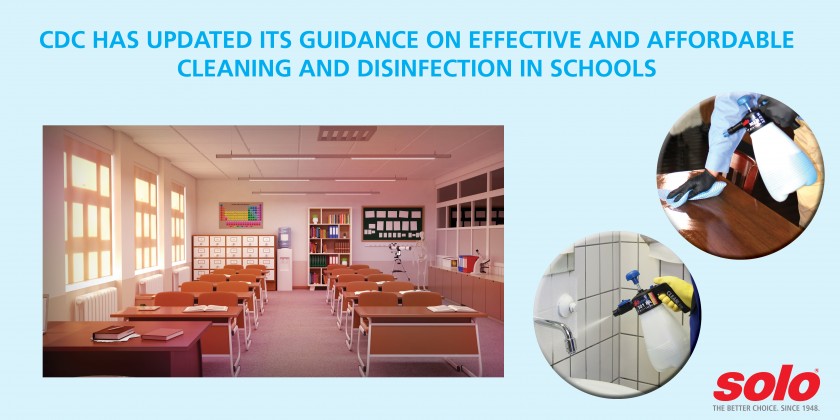
Before COVID-19, normal classroom environment wasn’t under so much scrutiny. The global pandemic has changed the way schools operate and made the safe school reopening with in-person instruction critical for pandemic recovery and long-term resilience of the society.
Many changes happened simultaneously when the pandemic started. Last spring, when COVID-19 was new and unknown, information about how to stop the spread of COVID-19 was untested and based on the experience with other SARS viruses. Use of masks, physical distancing, handwashing and surface disinfection were prioritized as the main prevention strategies.
Schools were concerned about how they would meet new and time-consuming cleaning and disinfection requirements. This put schools into a unique dilemma of balancing both budget and effective cleaning equipment. While these issues are still affecting schools, the CDC’s updated cleaning and disinfection guidelines have lifted the burden of excessive cleaning and disinfection.
A year into the pandemic, facilities maintenance professionals have a greater understanding of how to clean and disinfect a surface to help reopen schools safely.
How will cleaning and disinfection practices change?
While the CDC’s stance on surface cleaning and disinfection has changed, the two practices still remain essential to providing a safe environment. Surface disinfection is always crucial for maintaining a healthy environment but not at the level seen at the height of the COVID-19 pandemic. A year later, with more precise guidelines and a better understanding of how COVID spreads, surface cleaning and disinfection are viewed as secondary concerns compared to masking and proper increased ventilation.
The initial strict guidelines caused facilities to disinfect excessively. Excessive disinfection was a significant drain on facilities with limited budgets, like schools, and was taking away energy and resources from cleaning the air, which is more important for reducing the risk of transmissions in schools. It was not practical or affordable for schools to disinfect at such a high frequency. To start, some of the most popular spraying equipment was unaffordable for most schools. Another issue schools faced was understaffing. How could schools have enough staff to disinfect classrooms multiple times per day?
As it turns out, mass disinfecting multiple times a day is a waste of time and money. Also, it is not effective and could be harmful for students. Earlier this year, the CDC made it clear: cleaning is enough. Schools still need to clean and disinfect surfaces regularly, but not at the level seen in 2020. Rather than blindly disinfecting surfaces, the CDC recommends cleaning soiled surfaces and disinfecting high-touch surfaces frequently throughout the day.1
Cleaning and disinfection still matter
Cleaning and disinfecting are still important but not necessarily the primary way to prevent the spread of COVID-19. Responsible and effective cleaning and disinfection focus on the areas that have frequent human contact rather than indiscriminate spraying, which is time-consuming, wasteful, and potentially harmful if done incorrectly.2
The consensus is clear: schools and businesses don’t need to spray indiscriminately, and they don’t need the most expensive sprayers to clean and disinfect at the CDC’s recommended levels. Instead, schools and businesses should focus on cleaning soiled surfaces and disinfecting high-touch surfaces with effective and affordable sprayers safe for use with EPA-approved disinfectants.
1. CDC. Operational Strategy for K-12 Schools through Phased Prevention
Available at: https://www.cdc.gov/coronavirus/2019-ncov/community/schools-childcare/operation-strategy.html Accessed June 2, 2021.
2. CDC. Safety Precautions When Using Electrostatic Sprayers, Foggers, Misters, or Vaporizers for Surface Disinfection During the COVID-19 Pandemic
Available at: https://www.cdc.gov/coronavirus/2019-ncov/php/eh-practitioners/sprayers.html Accessed June 2, 2021.
